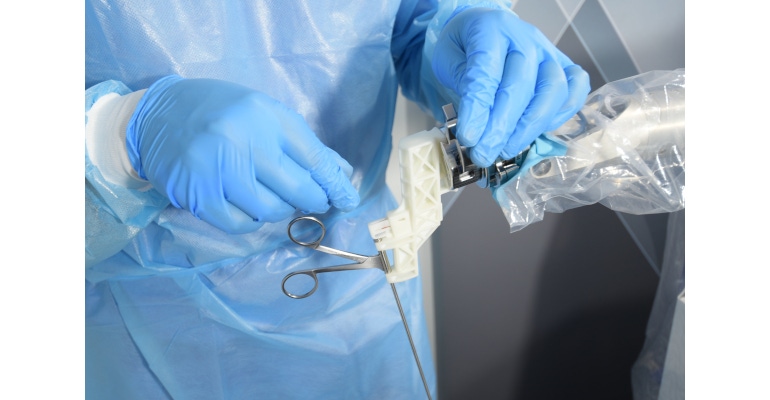Surgical equipment vendors and hospitals should no longer have us-versus-them relationships. They should embrace shared risks and rewards.
March 14, 2022

Despite many inclusive practices and programs, the relationship between hospitals and vendors of advanced surgical equipment, such as surgical robots, has essentially been one of us and them. When it comes to acquiring equipment, the burden has squarely been on the hospital for affording its cost but also in meshing it with its own medical and financial processes. Now that the pandemic has made such a significant impact on hospitals, the traditional hospital-vendor relationship must shift from us and them to one of a more-unified risk-sharing team. Vendors need to share in the burden and risk, and they also need to build programs to ensure usability within the hospital. The place where the buck stops and who bears the burden is clearly shifting.
One of the most profound shifts will be a move away from capital purchases to one based on operational expense, so to speak. Such a move occurred in business with software applications two decades ago with the advent of a new customer relationship management (CRM) applications. The software-as-a-service (SaaS) era was born, where companies no longer had to expend large sums for purchasing expensive server farms to run their platforms. This subscription model for software has proven effective for companies of all sizes and has lowered the bar for small to medium companies to utilize top-tier applications at a fraction of the costs. It also helps to preserve capital, manage spend, and provide scalability, as companies grow and add new users and new capabilities.
The same kind of shift that happened in high tech will start to happen in the acquisition and use of surgical medical equipment. It represents not only a change in purchasing details but a full embrace of a “shared risk” model that first surfaced in 1997 when The Medical Center at the University of California, San Francisco (UCSF), created a new way to manage the cost of acquiring pumps for infusion therapy. Working with a particular vendor, they devised a fixed payment schedule for more than 700 pumps, maintenance, warranties, and applicable upgrades. The move enabled UCSF to serve more patients and engage in cutting-edge treatments. Both UCSF were serving present needs, each sharing in cost and return or remuneration. They were also both investing in the future.
This shared risk model and the adoption of “as-a-service” procurement is becoming a necessity for hospitals challenged and even threatened by pandemic economics and business conditions. At the same time, it becomes an enabler for several new dynamics. First, not having to recoup sunk capital costs potentially eases any conflict between medical and hospital business decisions. Some hospitals, for instance, may set targets for utilization or create certain incentives for certain plans or activities. While such conflicts may only exist in some facilities and may be manifested more indirectly than directly, not having to have a solution in search of a problem alleviates any potential compromise.
Second, a move from requiring significant capital outlays to a usage-based, pay-as-you-go model eliminates the disparity between the have and have-not facilities. Surgical robots, for instance, are generally only affordable to large metropolitan teaching hospitals or smaller regional ones with special grant funding. This in turn may mean that certain procedures are only offered in the larger hospitals or with differing levels of service that put smaller or more rural facilities and their patients at a disadvantage. The coming generation of cooperative surgical robots offers the potential to utilize smaller ingress areas, avoid injury to fragile structures, suture smaller features, and minimize hand tremor for lengthy and delicate procedures. It is expected that all this will translate into faster recoveries, lower readmissions, and better outcomes. Such advantages should be available to all facilities, not just the ones with the greatest finances.
Third, by enabling the same level of cutting-edge technology to all facilities through having a level playing field, standards in medicine and in surgical procedures in particular can improve. Having a greater base of usage can enable more equity in quality of medicine. Similarly, making such equipment widely available may lower prices for procedures, possibly bringing them into reach for certain types of insurance or patients inferior coverage or without any coverage at all.
To be fair, there is a great history of hospitals and vendors partnering together to advance the state of medicine. Products can be tested and improved, and even ideas can be jointly advanced. Most vendors include leading surgeons on their advisory boards. Equipment is often substantially discounted or even provided gratis in some of these cases. Now with the existential pressures brought by the pandemic, the relationship needs to extend to the way equipment is procured and a sharing of the economic or business risk.
This need already exists and is growing but became greatly exacerbated by the pandemic. Now it’s time to move further with a new approach to acquiring advanced surgical equipment into a new age of shared risk and substantial reward.
About the Author(s)
You May Also Like


